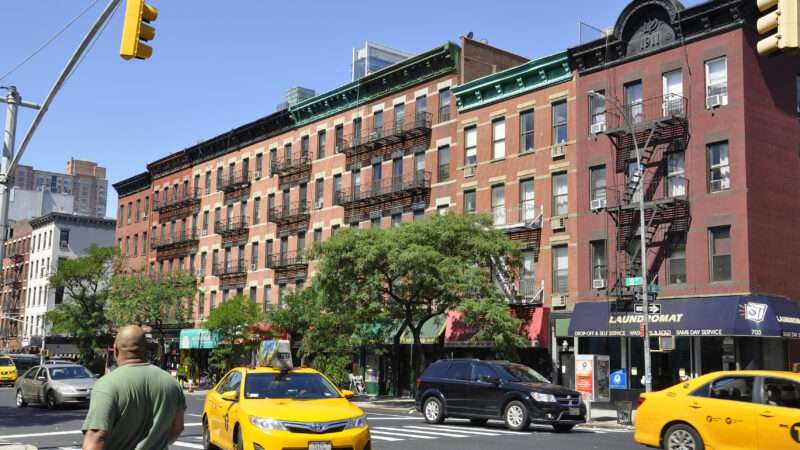
Those wishing the U.S. Supreme Court would reverse its longstanding blessing of the constitutionality of rent control were dealt a harsh blow last month, when the justices decided not to take up a major challenge to New York’s extensive rent regulations.
Yet hope springs eternal.
Currently idling on the Supreme Court’s docket is another petition for a writ of certiorari from New York City landlords. This one, in the case 74 Pinehurst LLC v New York, asks the court to consider the constitutionality of a state law that limits their ability to raise rents, choose their tenants, or even withdraw their apartment from the rental housing market.
Since August, the plaintiffs’ petition has repeatedly been placed on the agenda of the justices’ weekly conferences, where they decide whether to take up cases. The justices keep putting off deciding whether to take up the case. It was last on the conference agenda on Friday, but neither that day nor this morning has the Supreme Court’s orders mentioned it.
That’s stirred some limited optimism that the court may end up taking up the case, or that one of the justices will at least produce a dissent to a denial of the landlords’ petition that will outline how a subsequent rent control challenge might make it back to the Supreme Court.
“I suspect that one or more of the justices are taking their time to file a dissent to the denial” of cert, says Jim Burling, an attorney for the Pacific Legal Foundation. “That dissent is going to tell us what the next steps might be.”
The plaintiffs in 74 Pinehurst are challenging a series of 2019 changes made to New York’s decades-old rent stabilization law, which regulates rent increases for nearly a million apartments in the New York City area.
Prior to 2019, building owners were able to take a rent-stabilized unit off the market if they, or an immediate family member, wished to make it their personal residence. But the new amendments limited landlords to reclaiming only one rent-controlled unit for their family’s use. Any other units they owned would have to remain on the market and subject to rent stabilization regulations.
That’s caused problems for 74 Pinehurst plaintiffs Dimos and Vasiliki Panagoulias, immigrants from Greece who own a 10-unit building in the Long Island City neighborhood of New York City. The law prevents them from recovering a unit to give to their daughter, because their son already lives in the building, according to their cert petition.
The 2019 amendments also closed off a number of avenues that landlords had to “deregulate” (charge market rates) for their units and to recover the costs of repairs and capital improvements.
Both those changes helped tank the property values of rent-stabilized buildings. According to their petition, the Panagoulias’ value fell by 20 to 40 percent after the 2019 changes.
Throughout the process, the 74 Pinehurst plaintiffs, which include several other building owners, have argued that the 2019 limitations on landlords’ ability to recover a unit amount to a physical taking. The financially damaging limits on rent increases and inability to deregulate units amount to a regulatory taking, they further argue.
Very similar arguments were made by plaintiffs in a more prominent challenge to New York’s rent control scheme, Community Housing Improvement Program (CHIP) v New York.
New York’s law amounted to an “effective commandeering of private property for what is essentially perpetual rental housing,” said the plaintiff’s attorney, Andrew Pincus, to Reason in July.
That made the law a physical taking, argued Pincus. CHIP, a landlord trade association, also argued in its lawsuit that the law created a regulatory taking by slashing property values and holding rents below what was necessary to make a reasonable profit.
The CHIP lawsuit was broader than the 74 Pinehurst because it also challenged pre-2019 features of New York’s law.
Nevertheless, a U.S. District Court for the Eastern District of New York rejected both cases in a single opinion issued in September 2020. The Second Circuit Court of Appeals likewise ruled against the plaintiffs in the CHIP and 74 Pinehurst cases in February 2023.
That sweeping appeals court opinion asserted that even if New York’s rent stabilization law was forcing some building owners to operate at a loss, the fact that it wasn’t forcing all business owners to operate at a loss meant it wasn’t taking.
CHIP and the 74 Pinehurst plaintiffs both appealed to the Supreme Court in April. Supportive amicus briefs flooded in from landlord associations and pro-market think tanks.
Nevertheless, in October, the Supreme Court rejected the CHIP petition in an unsigned order. Meanwhile, Pinehurst 74 keeps rattling around on the conference schedule.
Burling speculates that some justices are attempting to avoid making another major, polarizing decision after making several controversial rulings on guns and abortion.
“The moderate wing may want to be holding their fire back,” he says.
If that’s the case, it’s yet another obstacle to what’s proven to be the very tall order of getting a rent control case before the Supreme Court.
Stretching back to the beginning of the 20th century, courts have been generally unwilling to put limits on state and local governments’ ability to regulate land use. The Supreme Court hasn’t shown much interest in getting involved in the issue either.
It doesn’t help that most rent control laws are passed in areas under liberal-leaning appeals courts. That creates fewer opportunities for split appeals court opinions that might prompt the Supreme Court to intervene.
But with the 74 Pinehurst case, there’s still a possibility that the high court might take up a challenge to rent control. And if it doesn’t, there’s a chance that a lengthy dissent might pave the way for a future case to get to the Supreme Court.
The post The Best Hope to Rein in Rent Control Is Lurking on the Supreme Court's Docket appeared first on Reason.com.
from Latest https://ift.tt/mARwuUf
via IFTTT